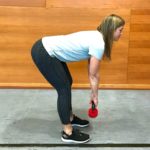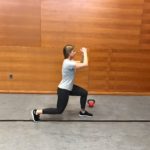Strength training is important because it makes you feel better. Its health-related virtues include decreased blood sugar and increased strength of bone, muscle, and other connective tissues, increased release of growth hormones (important for healing), and better coordination between the brain and body. Who doesn’t want all that? If I wanted to appeal to your vanity, I could say it makes you look better, too.
The thing is, although most of us know why strength training is good for us, we just can’t figure out how to fit it into our busy lives. If that’s true for you, I think it’s worth revisiting the whole question of how much time you really need to get more fit. Yes, a 30-to-60-minute workout would be ideal. But if you’re telling yourself that anything less than that is not worth it, you’re wrong. The problem with this all-or-nothing thinking is that most people end up with nothing. The truth is that anything, even 15 minutes of exercise, is better than nothing.
If you can find 15 minutes a day to work on strength, just a few times a week, it will add up to real progress, especially if you’re starting from scratch. Think about the interludes of just 15 minutes you could borrow from watching TV or scrolling through your social media.

That said, I’m not so sure about trying to do a full body workout in 15 minutes. Speeding through too many different exercises usually means sacrificing good form, which is the key to avoiding injury and getting results.
A better approach is to plan a short workout targeting one area of the body. If you follow one workout for legs and another for arms and add one for your core, your routine will vary nicely. And as you rotate through these over the course of the week, your muscles will have time to recover before you work them again.
Let’s start with what you’ll do for your legs. I’ll come back with other short workouts next time.
Choose three to five exercises that cover the glutes (your butt), quads (the front of your thighs), hamstrings (back of the legs), and calves. There are dozens of exercises out there, but here are a few to get you started (assuming you’re injury-free). Do eight to 12 repetitions of each.
Squats: Stand with feet hip-width apart, toes pointing ahead and slightly outward. Put your weight into your heels and push your hips back as you bend your knees. Make sure that your knees don’t move in toward the middle. Drive through your heels to return to standing.
 Deadlifts: Stand with feet hip-width apart, holding a kettle bell or hand weights, knees soft. Hinge forward at the hips, keeping your spine straight. Lift your torso and squeeze your buttocks as you return to standing fully upright.
Deadlifts: Stand with feet hip-width apart, holding a kettle bell or hand weights, knees soft. Hinge forward at the hips, keeping your spine straight. Lift your torso and squeeze your buttocks as you return to standing fully upright.
Calf raises: Stand with feet hip-width apart and hold a wall for balance as needed. Rise up on the balls of your feet as high as you can, then slowly lower.
Those first three would make an excellent beginner’s routine. Do the whole circuit one or two times for the first two weeks, then increase to two or three times. If you’re hungry for more, add one or more of the following exercises.
Lunges: Stand straight with feet hip-width apart. Step right leg back and lower the knee toward the floor. Align your left knee over your left ankle and keep your chest up. Drive down through your left foot to straighten the knee and step the right foot forward to return to start. Repeat with other leg. Continue, alternating sides.
Lateral band walks. Place an elastic loop around your ankles. Stand with feet hip-width apart and bend knees slightly. Step out to the right with right foot, then follow with the left foot (so that your feet are hip width again). Continue stepping to the right for all of your reps, then return by stepping to the left.
Bridges: Lie on your back with your knees bent, feet flat on the floor hip-width apart. Drive down through your heels and raise your hips toward the ceiling, pause for 2 or 3 seconds, then lower to starting position.
If you’re not sure about proper form, you might check out some online videos. But if it’s challenging for you to learn new movements, consider joining a class or working with a trainer to get some individualized instruction that will get you started on a good path.



